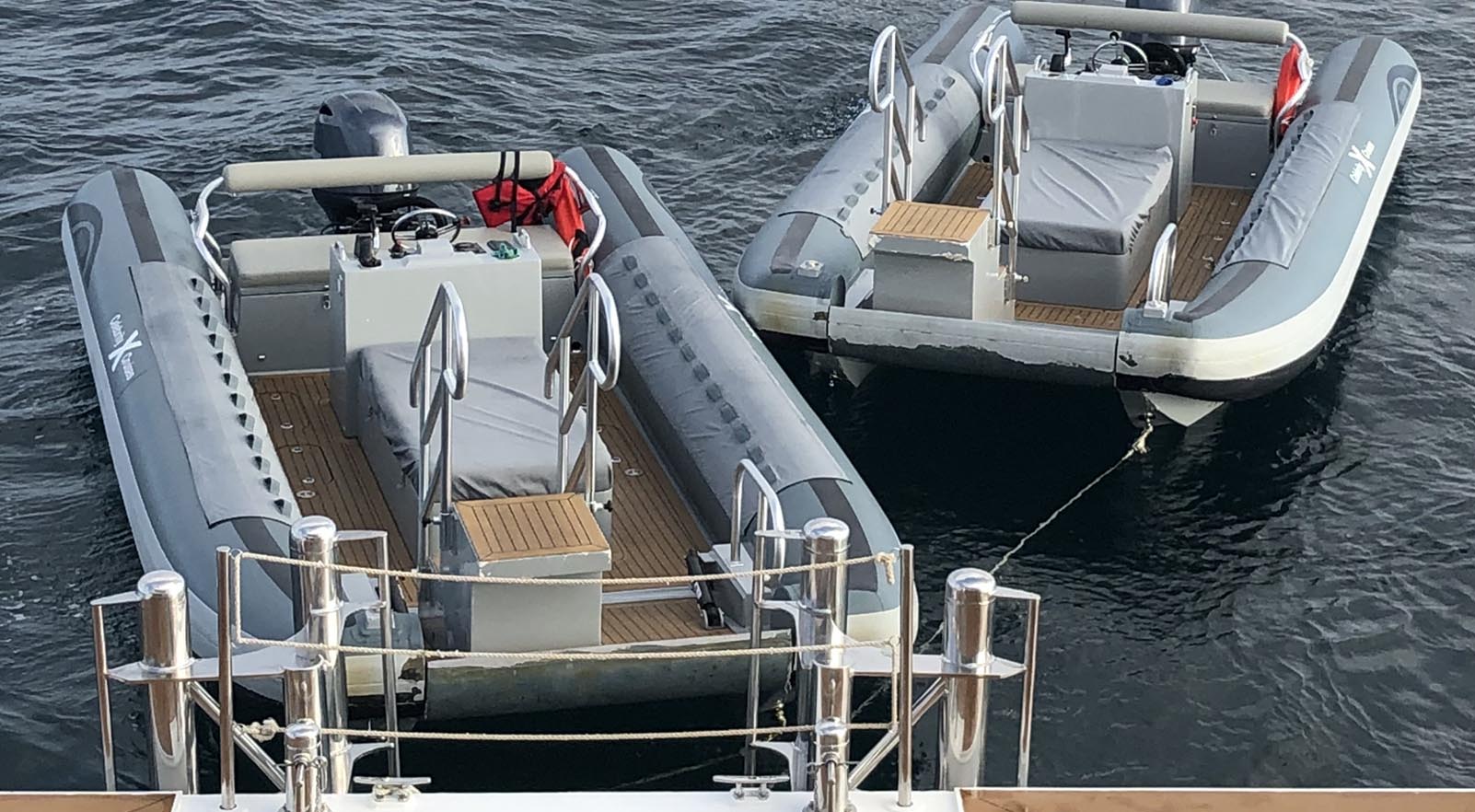Galapagos Islands, 2019
|
|

Image from unnamed Flora-based naturalist, shadows and highlights modified |

The Zodiac's on the Flora are custom units with a front section bearing a small staircase and a ramp. The entire front can be hydraulically lowered. The staircase is used for 'dry' landings while the ramp to the right of the stairs is used for 'wet' landings similar to military marine landing craft. Of note, the Flora stores 6 Zodiacs inside bays on each side of the boat. |
|
While the Galapagos are best known as the foundation for Darwin's theory on evolution, the Galapagos Islands are remarkable for its wildlife diversity and their tolerance for humans within close proximity. We were constantly amazed at how birds, iguanas, tortoises etc held their positions despite the presence of humans. Since animals have the right-of-way, many times we had to walk within inches of marine iguanas strewn across a path. For land iguanas, tortoises and sea lions we were advised to not get closer than ~6ft; even then, the animals did not move. Similarly, birds didn't fly away even though we were within 10-15 feet. A mating pair of waved albatrosses also did their mating dance a short distance away. At times, mockingbirds approached us within inches. Similarly, finches and warblers approached us; and one time, a warbler almost landed on my out-stretched monopod. As a bird photographer, this was simply amazing. Our tour consisted of the "Southern Loop" which consisted of Daphne, Espanolo, Floreana, Isabela, Fernandina, and Santa Cruz islands. In general, there were 2 outings per day; an 8-8:30 AM departure for a landing, return for lunch while the Flora cruised to the next location, and a 3-3:30pm departure for the second landing of the day. Each landing of 10-12 tourists was guided by a national park-certified naturalist. While we visited up to 3 sites per island, there are about 20 possible landing sites per island. The sites are allocated to boat operators and the time on land is also limited. Access to the islands is restricted; camping out even by locals is prohibited and all island visitors must be accompanied by a naturalist*. While this trip covered 6 islands, we did not visit Genovesa or San Cristóbal island where the Red-footed booby lives. So a return visit will be welcome! |
Gear: For this trip, I took 3 camera bodies and 5 lenses but rarely carried more than 2 bodies and 3 lenses. The equipment included a Sony A9, Sony A7R III and Olympus OMD EM-1 MarkII. The lenses included a Sony 200-600mm/F5.6-6.3, Sony 100-400mm/F4.5-5.6, Tamron 17-28mm/f2.8 and Olympus 12-100/F4 and Olympus 60mm/F2.8 macro. As recommended by Thom Hogan's 2012 Galapagos blog, I brought my knee-pads, monopod (with tilting head), ground pod, lightweight pack, ThinkTank belt/lens-bags, Opt-Tech twin camera harness, lens wraps and dry bag. The monopod also came in handy as a walking stick over some rough terrain. The details of my image processing workflow is described in the footnote below^.
Below are links to various image-heavy pages of wildlife. Each page contains 10-20 images, and each image is 2400 pixels wide/ 1MB in size. These links will be updated, because there are likely skipped subjects; e.g. wild pink flamingos, geologic formations (lava tubes) and some street scenes from the fish market in Santa Cruz or scenes from the brief transit through Quito Ecuador.|
| Blue-footed Boobies and sea lions |
|
| Crabs, penguins, rays, whales, turtle |
|
| Frigates, gulls, hawks |
|
| Herons, finches, warblers, mockingbirds, waved albatross |
|
| Iguanas and tortoises |
|
| Various Galapagos cactii |
* A naturalist informed us that even Ecuadoran citizens can visit for no longer than 6-months. While tourism is the major industry on the Galapagos, population growth on the islands is regulated by the government. Hence, employment on the islands is limited to internal growth; an outsider can only move to the islands if there is no local who can fill an open job role. Of note, one of our naturalists said that previously about 280,000 visitors per year were allowed on the islands. In 2019, 250,000 visitors were allowed, but the goal is to reduce the number to 200,000 annual visitors to reduce the environmental impact. The government enforces several eco-friendly policies: single-use plastics, seeds or seed-bearing food, and pets are banned from entering and about 15% of the energy comes from wind and solar power. In addition to conservation and breeding efforts for animals (such as giant tortoises), there are expansion programs for native plants (including cactii). There are also eradication programs for non-native plants and animals (the latter comprised mostly of rats but also feral dogs and cats).
^ Workflow: All images were shot in RAW mode and processed with Capture One, followed by Topaz DenoiseAI. Typically, my workflow consists of the following steps: straighten the image (if there is a horizon and the image is not level), crop (if needed, and never more than 100%), adjust contrast/highlights/shadows (if needed), clarity/structure adjustments, and finally DenoiseAI (noise suppression in CaptureOne is turned off). Sometimes curves and levels need to be adjusted; for hot spots that survive the highlights adjustment, sometimes the luminance of a color channel is reduced by flattening the top quintile or decile of a 5-point 'curve'.